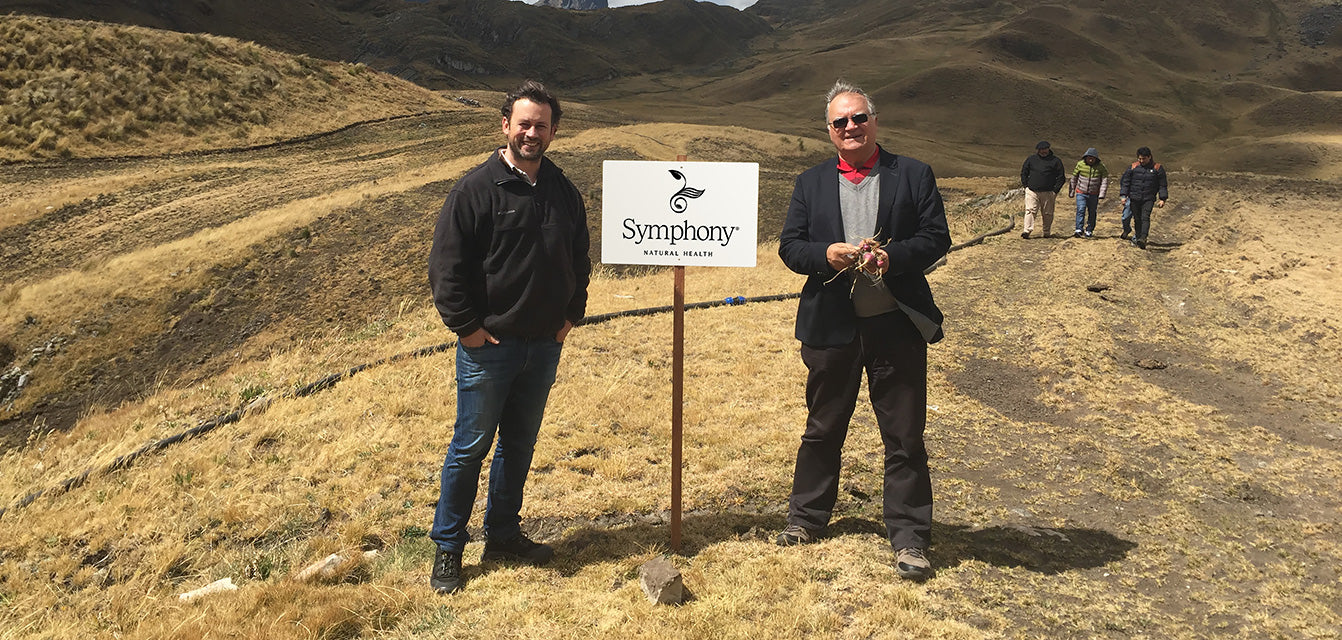When we turned on the light switch over 100 years ago, we began our slow descent into darkness deficiency.
The Impact of Light and Darkness on Health
Our bodies evolved over millions of years to develop a natural circadian rhythm based on light and dark—day and night. So much so that this natural circadian rhythm exists in every cell in our body and is an integral foundation of our health. Through the circadian rhythm, humans can produce vitamin D from sunlight on the skin and melatonin from the pineal gland in the dark. As we've seen historically, humans have long reconfigured their natural environment to suit their interests, sometimes to their own detriment.
The Global Shift: Light Deficiency and Darkness Deprivation
A perfect example of this shift occurred during the COVID-19 pandemic. It became clear that there was a global vitamin D deficiency. Research revealed that by reducing our exposure to sunlight, we were missing out on its role in producing vitamin D [1]. Moving from the farm to an office, a sedentary indoor lifestyle, combined with slathering on sunscreen whenever we went outside, was helping deal with some problems, but it contributed to others.
This global revelation about vitamin D has resulted in rethinking a balanced approach to sun exposure—and a movement through public health messaging to advocate for the widespread use of vitamin D supplements and to get out into sunlight first thing in the morning.
However, we weren’t just experiencing a sunlight deficiency, but a darkness deficiency and all the side effects of that on our health.
The amount of darkness our bodies need, beyond what we need for sleep, has become the focus of much research. Having light at night is not our natural state of being, nor is the type of light often used at night, which is the short-wave, blue type. Over billions of years, life on Earth has been cycling through the 24-hour circadian rhythm of bright daytime light (10,000-100,000 lux) and an absence of light at night (0.0001-0.5 lux) [2]. With the global implementation of electric lights, we began extending our days into the night through artificial (blue) light. Computers, phones, and other digital interfaces have further compounded the problem, making exposure to blue light even more excessive.
In fact, one could say that “darkness deficiency” is due to “artificial light toxicity.”
How Artificial Light Affects Circadian Rhythms
Of course, these artificial lights enabled us to work longer into the night, so we began spending even more time indoors. Unfortunately, the light we were getting during the day was diminished, up to 100 times dimmer than natural light, and greater intensity at night, up to ~1000 times brighter [2].
It’s called the circadian rhythm for a reason, and artificial light breaks it.
Every being on Earth has a circadian rhythm—from plants to animals to people. Each cell does more of its function at specific times of the day while doing less at other times. This synchronization is critical to the health of every plant and animal. As a result of artificial light toxicity and darkness deficiency, there is a widespread disruption in this rhythm. We can see a hint of this dysfunction in chronic night shift workers and our experience with jet lag. After all, it is well known that shift workers have a greater risk of cardiometabolic disorders [3] and breast cancer [4, 5]. It also increases the risk of cardiovascular disease, accelerated aging, and heightened risk for immune-inflammatory conditions.
Daylight Saving Time (DST) is one of the ways we can see that even changing the circadian pattern of light and darkness by an hour can have a detrimental ripple effect, resulting in more vehicle collisions and accidents, injuries [6, 7, 8], and may even make people less giving and charitable [9]. For more on the dangers of Daylight Saving Time, read our blog post on the topic.
Exposure to artificial light at night is one of the most significant hormone disruptors. Society accepts and even promotes working longer hours and constantly connecting through our light-emitting devices. Being connected 24/7 sounds appealing. But there are significant downsides. Our ability to produce melatonin is one of the most dramatic. While we know many of the negative side effects of lack of sleep, as more research is done on the connection between sleep and other health issues, it is becoming apparent that lack of melatonin may be a major factor.
The Role of Melatonin in Health
When we turned on the lights, we turned off our ability to produce melatonin.
More research is needed, but the connection between melatonin and immune modulation, inflammation, antioxidant activity, anti-carcinogenic actions, and phase separation highlights how foundationally important melatonin is for our health.
Even though melatonin is often associated with sleep, it's more accurately the “hormone of darkness”. Our bodies produce it when our eye begins to register darkness, normally in early evening as the sun sets, often when lights dim, gradually ramping up with the highest levels produced when we are asleep, at the peak of darkness, usually around 2-4 AM. When the photoreceptors in the eye detect the absence of light, a signal is sent to a cluster of 20,000 nerve cells in the brain to a region called the suprachiasmatic nucleus (SCN) [2] to inform the pineal gland to produce melatonin. This melatonin circulates through the body to communicate with our clock genes to wire us for food intake, sleep time, and activity patterns.
Even subtle changes in light before bedtime can alter its production [10]. Having greater exposure to light (<200 lux) compared to dim light (<3 lux) during the hours leading up to bedtime suppresses pre-sleep and even daily levels of melatonin by about 70% and 12.5%, respectively [10]. Specifically, melatonin production is most sensitive to short-wavelength (blue) light, so light from computers and other electronic devices is particularly problematic.
What vitamin D supplements do for light deficiency, melatonin does for darkness deficiency.
As we have learned from correcting vitamin D deficiency through increased sunlight exposure and vitamin D supplementation, there is a parallel correlation between melatonin and darkness exposure. Our published review article brought up the thought-provoking question of whether melatonin could be the “next vitamin D” due to similar circumstances. We pushed the conversation further to say that there is a pervasive “darkness deficiency” resulting in widespread lowered melatonin levels, much like a “sunlight deficiency” for vitamin D.

Figure 1. Minich, D.M., et al., Is Melatonin the "Next Vitamin D"?: A Review of Emerging Science, Clinical Uses, Safety, and Dietary Supplements. Nutrients, 2022. 14(19).
Yet, there is a balance to be struck between sunlight and darkness. Another scientific paper discussed how melatonin and vitamin D are “two sides of the same coin,” especially when it comes to diseases more common in northern latitudes, like multiple sclerosis, where there is a high degree of darkness and a negligible amount of light [12]. The authors suggested that it is best not to have too much darkness either, without the balance of the sunlight. The two are to work in a yin-yang harmony with our inner rhythm. We may need to be even more attentive to this harmony in our later years when the absolute levels of both vitamin D and melatonin dip down.
Darkness becomes even more critical as we age, with our own melatonin production declining from around 0.8 mg when we are in our teens to around 0.3 mg during our 20s and 30s, down to 0.1 mg by our 50s and beyond [12]. Coincidentally, the risk for several chronic diseases begins to emerge around this time of life, worsen as we age, and seem to go well beyond simply not getting enough sleep. Putting the two together, there may be some connection between rising chronic disease rates and low melatonin levels with age. The European Food Safety Authority (EFSA) and others have recommended using low doses of 0.3 to 1 mg in older adults to help with sleep.
This connection is because melatonin is more than a powerful hormone—it is a potent anti-inflammatory, antioxidant, and free radical scavenger. It cleans up the cells and helps the mitochondria to function better. Newer research suggests it’s even helping the brain to detoxify at night through the glymphatic system and that clearance of amyloid-beta and hyperphosphorylated tau proteins (two hallmarks of Alzheimer’s disease) can occur during sleep, especially slow-wave sleep [1, 2, 13]. Interestingly, melatonin may be an important molecule for this process [3, 4, 14]. The research is still preliminary, but it would hint that melatonin given to animals can increase the glymphatic clearance of amyloid-beta and even reduce its production and deposition in the brain [12].
Without adequate melatonin, there can also be associations with cognitive issues, sleep disturbance, changes in the immune-inflammatory response at the cellular level, and greater risk for diseases like dementia, autoimmune disease, infertility, and cardiometabolic syndrome. Emerging research investigating melatonin’s impact on cell biology through liquid-liquid phase separation indicates that melatonin may disrupt the takeover of the cell by viruses. This is why many functional medicine doctors looking at root cause medicine advocate for many patients to use low-dose melatonin 0.3 mg once they reach their 50s and beyond.
What’s the takeaway? Getting our daily dose of darkness…and melatonin…is essential for health and promoting healthy aging.

Figure 2.The health impacts of circadian disruption. Image Credit: Meléndez-Fernández OH, Liu JA, Nelson RJ. Circadian Rhythms Disrupted by Light at Night and Mistimed Food Intake Alter Hormonal Rhythms and Metabolism. Int J Mol Sci. 2023 Feb 8;24(4):3392. doi: 10.3390/ijms24043392. PMID: 36834801; PMCID: PMC9963929. https://creativecommons.org/licenses/by/4.0/
The Impact of Light on Sleep
Light also plays a critical role in regulating our sleep patterns by influencing the body’s circadian rhythm, the internal biological clock that governs when we feel awake and when we feel sleepy. The intensity, duration, and timing of light exposure can significantly impact how well we sleep.
Exposure to natural light, particularly in the morning, is the most potent cue for aligning our circadian rhythm. Morning sunlight exposure signals to our body that it’s time to be awake, promoting alertness and stimulating the production of hormones like cortisol and serotonin, which help us feel energized.
Morning light is so effective for regulating our circadian rhythms because it provides blue light. This specific type of light promotes a more awake and alert state, making you feel more energized during the day and leading to a more balanced sleep-wake cycle overall [15].
Researchers have found that spending at least one to two hours outdoors is associated with improved sleep quality, reduced tiredness, and an easier time waking up. Even just one extra hour of daylight can make a noticeable impact on sleep and overall alertness [16]. By contrast, a lack of exposure to morning light can lead to disruptions in the circadian rhythm, making it harder to wake up and feel refreshed. Plus, it can make it more challenging to fall asleep at night.
Yet, the timing of morning light needs to be carefully managed to ensure it doesn’t disrupt sleep patterns later in the day. While morning light can help reset the circadian rhythm and improve alertness, too much exposure to bright or blue-enriched light too late in the day can interfere with the body’s natural wind-down process and delay the onset of sleep.
Ideally, exposure should occur within the first one to two hours after awakening, with a recommended duration of 15 to 30 minutes. The intensity of light is also important, as natural daylight provides around 10,000 to 1000,000 lux, depending on the time of day, whereas indoor light typically provides around 200-500 lux (or higher if facing a window). In the absence of natural light, a light therapy box emitting 10,000 lux can be used as a suitable alternative. Yet, as with natural light, the timing and duration needs to be carefully managed in order to maintain a healthy sleep-wake cycle.
Indicators of Darkness Deficiency
Many people are unknowingly deficient in darkness and subsequently low in melatonin. This deficiency, or even insufficiency, of darkness and/or melatonin, can create cognitive, sleep, and mental health challenges when our children or we are on devices at night, when we live in a well-lit urban area, or simply when we work on our computers or watch television late into the evening.
Here are some subtle signs that might suggest you have darkness deficiency:
- Being on the computer, iPad, television, or other electronic devices after 7 PM without any blue-light blocking filter.
- Using a smartphone or another electronic device while in bed before going to sleep.
- Reading books in bed before going to sleep.
- Keeping lights on in the bedroom when sleeping, even just a night light, LED alarm clock, or light from outside such as streetlights or moonlight.
- Spending time in well-lit areas like a gym, shopping mall, or sporting events, after 7 PM.
Steps to Correct Darkness Deficiency
Here are eight things you can do to correct darkness deficiency:
- Aim for darkness at night: Reduce or avoid artificial, short-wave, blue light at night by using dimmers on lights and even dimming the intensity on a computer screen.
- Choose red light over blue at night: Opt for red-light sources in the evening to offset exposure to blue light, such as using red-light light bulbs, salt lamps, candles, red-tinted eyeglasses, and even fire in the fireplace.
- Expose the eyes to blue light in the morning: Blue light is not entirely undesirable – it simply has to be timed with the rhythm of the day, specifically in the morning. Bright light therapy has been used for reducing symptoms of seasonal affective disorder and even recalibrating circadian rhythm [2].
- Wear blue-light blocking eyeglasses at night: If technology is unavoidable, wear blue-light blocking glasses when working on the computer or even using the phone.
- Make your bedroom “darkness-proof”: Keep your bedroom as dark as possible by removing nightlights and bright LED lights (e.g., alarm clocks) and hanging blackout curtains or wearing an eye mask to shield light.
- Be one with the darkness: Align with nature by allowing yourself to create a routine that enables you to wind down as it becomes dimmer outside. Alter this rhythm with the seasonal shifts.
- Limit food intake at night: Since food intake and appetite is connected to circadian rhythm, reduce changes to metabolic signals at night to help keep glucose and insulin in check, and cardiometabolic risk low. Work with a health professional to personalize eating timing to your needs.
- Replenish lost or declining physiological (the amount the body makes) levels of melatonin with a quality low dose (0.3 mg) melatonin supplement: Herbatonin®, our plant melatonin made from alfalfa, chlorella, and rice, has been shown to outperform synthetic melatonin by 646% in anti-inflammatory activity [17], up to 957% greater inhibition in free radical scavenging [6], and is up to 100% more effective in supporting cellular and mitochondrial health [17], giving your body what it needs when you are missing out with what the darkness provides.





